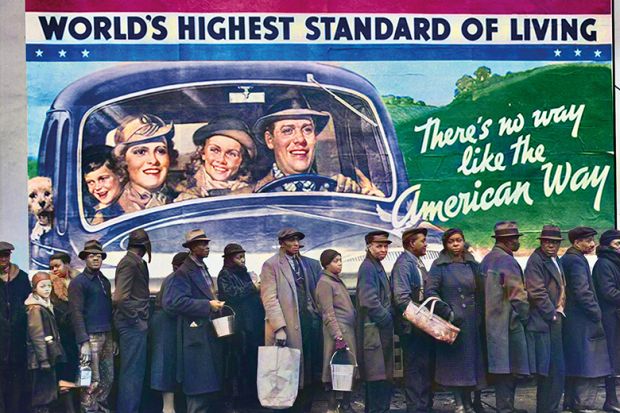When the overseers of 75 per cent of all public undergraduate education in the US decide to do something, transformative change happens – at scale. This opportunity is now before us, thanks to the determined leadership of the National Association of System Heads (NASH), an organisation whose few dozen members are a small enough group to stay closely coordinated but have extraordinary influence over more than 1,000 colleges and universities, which educate millions of students.
At NASH’s recent Power of Systems “superconvening”, higher education system leaders committed to increase the number of credentials awarded by 35 per cent, decrease racial and income graduation disparities by 50 per cent, and increase social mobility among alumni by 15 per cent. All in, this represents 1.5 million more benefiting students over the next 10 years.
Their reforms are organised around five “imperatives”: systemness, talent, learning, equity and investment. Already, reforms are being tested, measured, refined and scaled through “networked improvement communities”, using proven methods from improvement science. The metrics and approach are key: as NASH leaders Rebecca Martin and Nancy Zimpher know from their accomplished careers, “What gets measured gets done.”
The Association of College and University Educators, of which I am president, has a close working relationship with NASH and we’re proud to support its efforts. In late 2019, little did we know that our “Scaling Student Success through Effective Teaching” initiative, in which over 1,500 professors in four state systems became ACUE certified, would be such a lifeline for faculty and their students during the pandemic switch to online teaching. Or that learnings we gained about the nuances of equitable instruction would inform ACUE’s new Fostering a Culture of Belonging microcredential.
We know that effective teaching is necessary to achieve all five imperatives. As Texas A&M system’s Shonda Gibson notes, “We cannot fulfil the learning imperative or the equity imperative if we don’t invest in our faculty.” City University of New York (CUNY) system chancellor Félix V. Matos Rodríguez explains why: “Most faculty members did not receive any training to teach [while] in graduate school.”
Research shows that learning increases and equity is advanced when teachers employ evidence-based practices. And when professional development is treated as an investment in higher education’s own “talent” – professors – there is a discernible financial return owing to higher student retention and associated tuition. As for “systemness”, Matos Rodríguez continues that some policies and practices that incentivise effective teaching can only be instituted “at scale” by system leaders.
Bold initiatives to improve higher education come and go, but this one is different. As I see it, NASH’s fundamental value is its ability to deliver cash, cover and conviction. It has raised over $6 million to run improvement communities on the equity imperative and student transfer from community colleges and from associate to baccalaureate programmes. It will soon start awarding $50,000 grants – small, for sure, but enough to break inertia. System-to-system collaboration provides political cover, as leaders can point to what others are doing and generate some Fomo (fear of missing out). Finally, the five imperatives and associated best practices are the right ones. They instil confidence.
But on top of cash, cover and conviction, NASH must add coalition. In their enthusiasm, NASH’s members predict that “prosperity is within reach” because of what higher education “does and has to do”: move people “from poverty to prosperity”.
We all enjoy inspiring words to overcome the daily slings and arrows that impede our advance. And the data are clear: Americans are more likely to have healthy, rewarding and economically secure lives when they hold a college credential. But the vaulting prose echoes that offered by public schools in the wake of the 1983 report A Nation at Risk: The Imperative for Educational Reform, which unfairly blamed them for the country’s lack of economic competitiveness and social problems. The educational community responded in good faith with a flurry of ambitiously described reforms. But schools alone could not, and cannot, create prosperity for all. By the early 1990s, the inevitable disappointment undermined public schools’ legitimacy and paved the way for two decades of divisive neoliberal policies.
Education helps a person escape poverty. It doesn’t directly, in the short run, combat poverty. That work requires a larger coalition, with government and civil society, dedicated to making American life more fair, kind and just.
Higher education system heads are appointed by governors and report to well-connected, publicly accountable trustees. They need to inspire elected officials, the business community, and the public about the extraordinary value of higher education. But they must also show courage in communicating the limits of our work and, in doing so, bring others into it.
System leaders are better positioned than most to grow the “success and equity” coalition that students deserve – and NASH must demand that they do.
Jonathan Gyurko is president and co-founder of the Association of College and University Educators.
Register to continue
Why register?
- Registration is free and only takes a moment
- Once registered, you can read 3 articles a month
- Sign up for our newsletter
Subscribe
Or subscribe for unlimited access to:
- Unlimited access to news, views, insights & reviews
- Digital editions
- Digital access to THE’s university and college rankings analysis
Already registered or a current subscriber? Login








